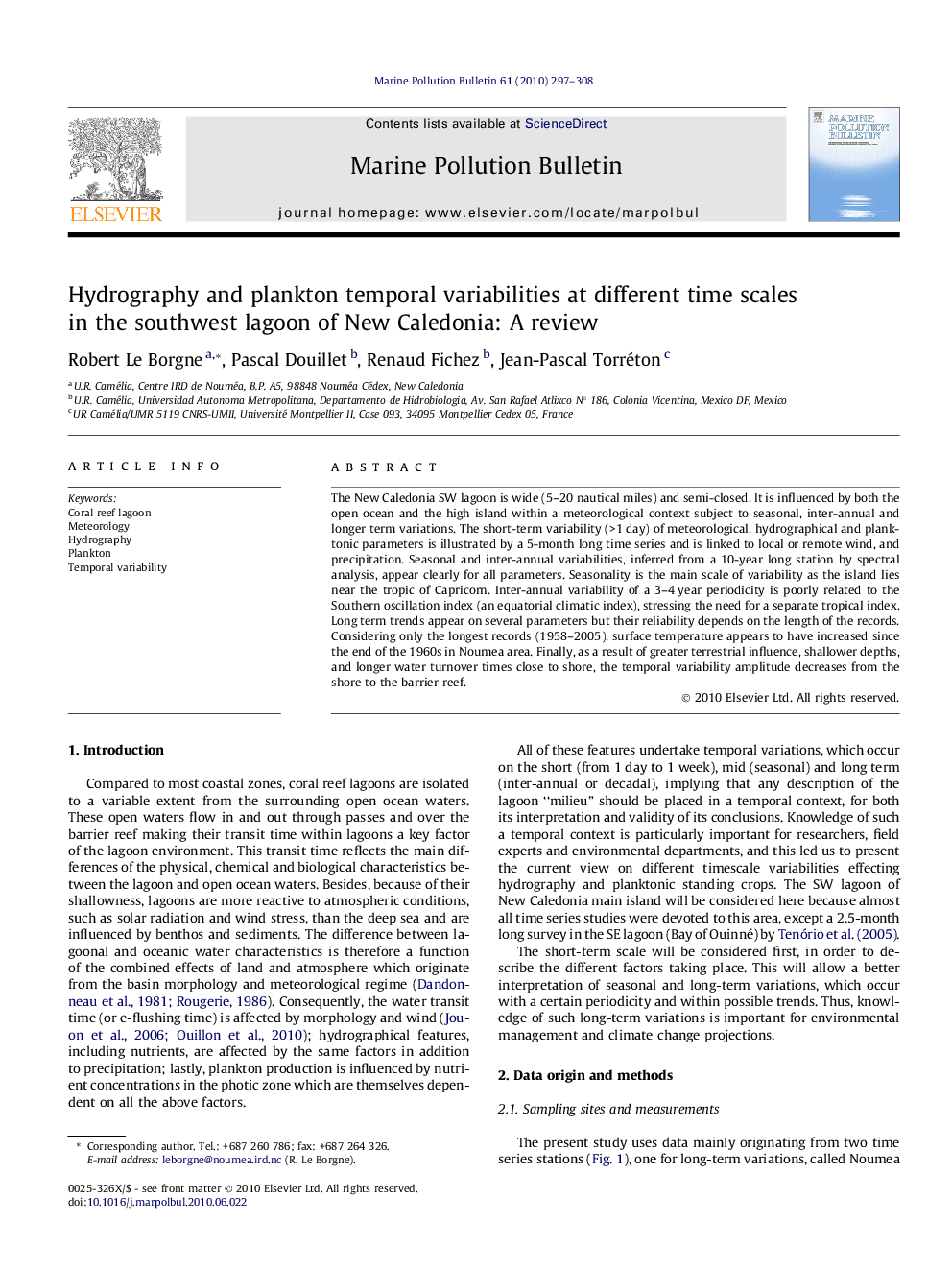| Article ID | Journal | Published Year | Pages | File Type |
|---|---|---|---|---|
| 6362134 | Marine Pollution Bulletin | 2010 | 12 Pages |
The New Caledonia SW lagoon is wide (5-20 nautical miles) and semi-closed. It is influenced by both the open ocean and the high island within a meteorological context subject to seasonal, inter-annual and longer term variations. The short-term variability (>1Â day) of meteorological, hydrographical and planktonic parameters is illustrated by a 5-month long time series and is linked to local or remote wind, and precipitation. Seasonal and inter-annual variabilities, inferred from a 10-year long station by spectral analysis, appear clearly for all parameters. Seasonality is the main scale of variability as the island lies near the tropic of Capricorn. Inter-annual variability of a 3-4Â year periodicity is poorly related to the Southern oscillation index (an equatorial climatic index), stressing the need for a separate tropical index. Long term trends appear on several parameters but their reliability depends on the length of the records. Considering only the longest records (1958-2005), surface temperature appears to have increased since the end of the 1960s in Noumea area. Finally, as a result of greater terrestrial influence, shallower depths, and longer water turnover times close to shore, the temporal variability amplitude decreases from the shore to the barrier reef.
